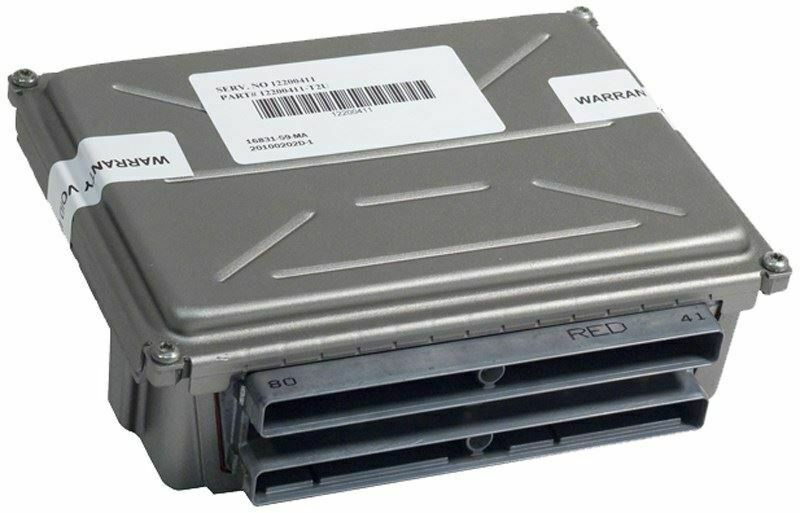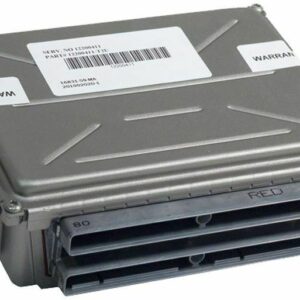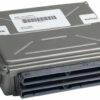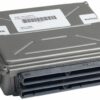Restore Peak Performance to Your 2003 GMC Envoy XL
Is your 2003 GMC Envoy XL suffering from baffling electrical issues, a persistent Check Engine Light, or a frustrating no-start condition? As a technician with over two decades of experience, I’ve seen countless cases where the Powertrain Control Module (PCM) is the culprit. This isn’t just a part; it’s the brain of your vehicle’s engine and transmission, and when it falters, everything from fuel economy to shift quality can be affected. This replacement 2003 Envoy XL PCM is the reliable, straightforward solution to get your truck running right again.
We take the guesswork and extra expense out of the equation. Unlike sourcing a module from a salvage yard or even the dealership, this unit arrives at your door pre-programmed with the latest GM software updates. All we need is your vehicle’s VIN at checkout. This ensures perfect communication between the module and your specific vehicle systems, effectively restoring its original factory performance and efficiency.
From the Diagnostic Bay: The Case of the Intermittent Stall
A customer brought in a 2003 Envoy XL with a problem that was driving them crazy: it would randomly stall at stoplights, but not every time. There were no consistent trouble codes, just a history of a U0100 (Lost Communication with ECM/PCM) code. We checked all the usual suspects—fuel pressure, wiring harnesses, grounds—and everything looked perfect. After hours of diagnostics, we monitored the PCM’s internal voltage regulator on a scope. We saw tiny, intermittent voltage drops inside the module itself, causing it to briefly reset. This explained the random stalls and communication loss codes. A new, properly programmed PCM fixed the issue permanently. It’s a classic example of how an internal PCM fault can create symptoms that mimic other component failures.
Is Your Envoy XL Showing These Telltale Signs?
A failing PCM can manifest in numerous ways. If you’re experiencing any of the following, it’s a strong indicator that your engine computer may need replacement:
- ✔ Unexplained Check Engine Light illumination.
- ✔ Stored diagnostic trouble codes (DTCs) like P0601, P0606, or U0100.
- ✔ The engine cranks but refuses to start.
- ✔ Harsh or erratic automatic transmission shifting.
- ✔ A noticeable, sudden drop in fuel mileage.
- ✔ Misfires or rough idling even after replacing plugs and coils.
- ✔ Communication errors with diagnostic scan tools.
A Straightforward Guide to Installation
Replacing the PCM on your Envoy XL is a job most DIYers can handle in their own garage. For the 2003 Envoy XL, the PCM is conveniently located in the engine bay, next to the air filter box.
- Safety First: Always disconnect the negative terminal from your vehicle’s battery and wait at least 15 minutes for the system capacitors to discharge.
- Locate the PCM: Open the hood and find the PCM mounted on a bracket next to the air intake housing on the driver’s side.
- Disconnect Connectors: Carefully release the locking tabs and unplug the wiring harness connectors from the old module. Never force them; they should release smoothly.
- Remove the Old Module: Unbolt the PCM from its mounting bracket. Keep the hardware, as you may need to reuse it.
- Install the New PCM: Mount your new, pre-programmed PCM onto the bracket and securely fasten it.
- Reconnect Everything: Plug the wiring harnesses back into the new module until they click into place. Reconnect the negative battery terminal.
- Security Relearn: You will need to perform a security relearn procedure (often called a CASE relearn). This typically involves turning the key to the ‘ON’ position for 10-15 minutes, then ‘OFF’, and repeating two more times. This allows the vehicle’s anti-theft system to recognize the new PCM. Your vehicle will not start until this is completed.
Verified Fitment for Your GM Truck or SUV
This PCM, service number 89017750, is a direct replacement for a wide range of GM vehicles. It is also compatible with service numbers 12582605, 12589463, 12602802, 89017734, and 28042802. Please verify your part number or contact us with your VIN to ensure compatibility. This unit fits:
ESCALADE, ESCALADE ESV, ESCALADE EXT 03-06
HUMMER H2 03-07
ISUZU ASCENDER 03 (5.3L)
SIERRA 1500, 2500, 3500 PICKUP 03-07 (Classic Style)
SIERRA DENALI 03-07 (Classic Style)
SILVERADO 1500, 2500, 3500 PICKUP 03-07 (Classic Style)
SSR 03
SUBURBAN 1500, 2500 03-06
TAHOE 03-06
TRAILBLAZER EXT 03 (5.3L)
YUKON, YUKON XL 1500, YUKON XL 2500 03-06
ENVOY XL 03 (5.3L)
Note: Some models may have specific ID requirements (e.g., ID 12602802). Please match your service number for guaranteed fitment.
Frequently Asked Questions
Do I need to do anything after I install this PCM?
Yes. While we program the module to your VIN, you must perform a security relearn procedure after installation. This is a simple process that syncs the new PCM with your vehicle’s anti-theft system and typically takes about 30 minutes. Instructions are readily available online for your specific model.
What is a VIN-programmed PCM?
It means we flash the module with the specific software and calibrations for your exact vehicle using the Vehicle Identification Number (VIN) you provide. This ensures it works correctly right out of the box, without requiring a trip to a dealership for expensive programming.
How do I find my original PCM service number?
The service number is printed on a sticker directly on your current PCM. It will be a multi-digit number, and matching it to our compatible list (89017750, 12582605, etc.) is the best way to confirm a match.
Will this fix my ‘No Start’ problem?
If your ‘no start’ issue is caused by a faulty PCM, then yes, this will be the solution. Common indicators are a lack of spark and no fuel injector pulse, despite having power to the coils and injectors. Proper diagnosis is key, as other parts like a crankshaft position sensor can cause similar symptoms.
Is this part difficult to install myself?
For most individuals with basic hand tools, this is a very manageable DIY job. The PCM on the 2003 Envoy XL is easily accessible in the engine bay. The most important part is disconnecting the battery and performing the security relearn correctly after installation.



